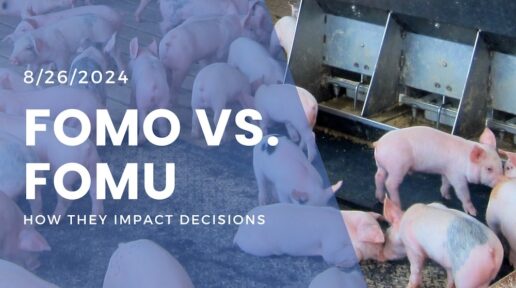“Life starts outside your comfort zone” might be a fine philosophy to live by – except in the hog barn.
In there? Pigs need to stay squarely in their thermoneutral zone: the range of ambient temperatures at which they can maintain a normal body temperature.
When barn temperatures get too hot or too cold, hogs suffer from health issues, appetite changes, lower reproductive function, and even increased risk of disease. In extreme cases, sweltering heat or frigid cold can kill them.
Ensuring a consistent, comfortable barn temperature is an animal welfare issue – and an economic one. When pigs are too hot or too cold, they spend precious energy trying to regulate their body temperature, instead of putting on weight. This leads to a longer timeline to reach market weight (if they ever do).
Technology, though, can help pork producers alleviate some of that risk. A robust alarm system can update you – immediately – if there’s been a big temperature fluctuation. This means you can get to your animals faster, before that shift in temperature becomes a full-scale emergency.
Because when it comes to the temperature of your animals, the stakes are high.
How heat stress impacts hogs
Pigs are physiologically more prone to heat stress than other livestock. They can’t sweat. They have a thick layer of subcutaneous fat. And their lungs are fairly small.
So when a hog barn gets too hot, the animals inside suffer.
Respiration rates will increase. Hot conditions can harm pigs’ intestinal defense function, which can put them at more risk of bacterial infections. Reproductive performance will suffer.
Amidst high temperatures, hogs’ appetites will decrease by up to 50%. When those appetites decline, so do average daily gains. When gains decrease, so do sale prices – and your profits.
It’s a huge issue in pork production. According to Dr. Steve Pollmann of Smithfield, heat stress causes the industry $900 million – yearly. If producers can find a way to mitigate that risk, not only will your pigs be healthier. So will your bottom line.
So how hot is too hot? Iowa State put together a heat stress index chart that depicts the relationship between temperature, humidity, and danger levels for pigs.
How cold stress impacts hogs – and your barn
On the opposite end of the spectrum, chilly pigs will also suffer. Cold stress can negatively affect a pig’s immune system, their overall welfare, and even the air quality inside the barn. Diseases can spike. And sows can struggle with fertility and milk production when they can’t stay warm.
When the environment is too cold, pigs’ feed efficiency also goes down. Since they have to use so much energy to maintain an adequate body temperature, they need far more feed to actually put on weight. You’ll need to bump up the daily feed allowance when it’s too frigid – possibly even by a factor of three.
Those extra feed expenses can be quite the burden, on top of your heating bills. Properly heating a hog barn can feel daunting (propane is expensive!). But there are ways to optimize your energy use.
In the meantime, it’s important to monitor drastic downward swings in temperature. Those swings could be because of a power outage, for example, or because you didn’t change the thermostat settings before a brutal cold front rolled in. Regardless of the cause, what’s most important is fixing it – ASAP.
If temperatures are below freezing for too long, your barn’s pipes are also at risk of freezing. Not only is that an expensive mess to clean up – but it also endangers your animals even more. When external conditions are particularly frigid, continuously monitoring your barn’s temperature can give you some warning of whether your infrastructure is at risk.
Using hog barn alarms to keep pigs in their thermoneutral zone
Here’s the good news: continuous temperature monitoring no longer requires physically going to each barn in your operation. Smart alarms, like Distynct, can do that work for you.
You’ll know immediately when there’s a temperature anomaly – or a power outage that’s about to cause one. You can create a custom call order, so the right people get notified. And you can even acknowledge an alarm or adjust settings directly from your phone.
Like every producer in history, you know you can’t control the weather or external temperature. But these days, you do have a little control over barn temperatures – as long as you have the right tools to monitor conditions and make adjustments quickly.


